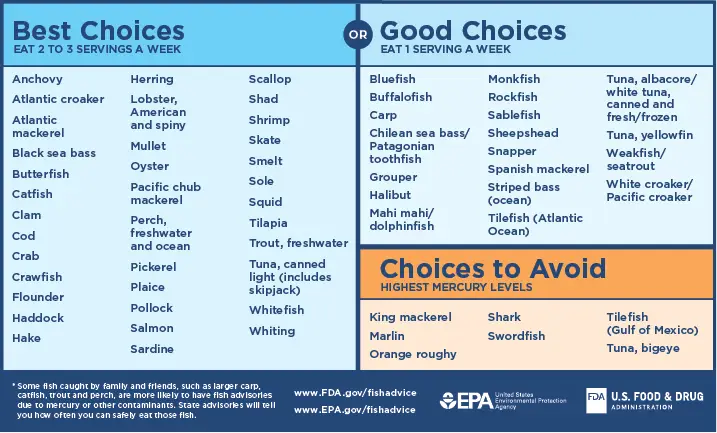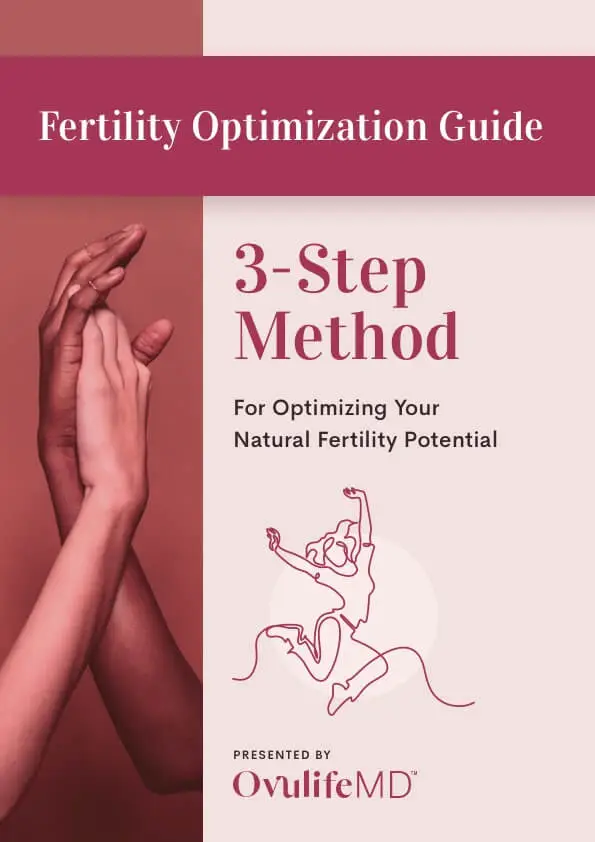
Like most in grade school, we memorized a bunch of elements in the periodic table and long sense forgot about most of them.
But as you’ll soon find out, it’s important to refamiliarize ourselves with some of them, especially those classified as heavy metals.
And although the impact of heavy metals on reproductive health often goes overlooked, they can wreak havoc if they accumulate.
Here’s a quick overview of what you’ll discover:
What Are Heavy Metals?
Heavy metals are naturally occurring elements that are found throughout the earth’s crust.
Scientifically speaking, heavy metals are generally defined as those metals with relatively high densities, atomic weights, or atomic numbers. The precise definition depends on who you ask, but it’s really not all that important for what you are here to learn about…
What’s important to note is that some heavy metals are essential for human health while others can be toxic depending on their quantity or form.
Heavy metals essential for biological processes within the body:
-
Chromium (glucose utilization)
-
Cobalt (cellular metabolism)
-
Iron (oxygen transport and energy production)
-
Selenium (antioxidant and hormone production)
Heavy metals potentially harmful to the body:
-
Arsenic
-
Cadmium
-
Lead
-
Mercury
Keep in mind that a deficiency in some of the heavy metals (i.e., iron, chromium, etc.) may increase your risk of chronic disease in addition to increasing your susceptibility to toxicity of the more harmful heavy metals.
So the take-home point here is that NOT all heavy metals are inherently bad.
How Do Heavy Metals Get Into the Body?
As we mentioned, heavy metals are naturally found within the earth.
They frequently go on to become concentrated within the environment and our exposure risk increases as a result of several industrial processes.
Potential sources of heavy metals include mining, industrial waste, agricultural runoff, aging water supply systems, occupational exposure, paints, and treated timber to name just a few.
Over time, we can then be exposed to small amounts of heavy metals through food, water, air, and commercial products. And once in the body, heavy metals can accumulate in your vital organs including your ovaries (and testes too!).
Occupations with higher exposure risk:
-
Auto mechanics
-
Estheticians & Hairstylists
-
Dental workers
-
Jewelry makers
Reproductive Health & The Top 3 Toxic Heavy Metals
Mercury
Mercury is a heavy metal that occurs naturally in the environment. However, it’s also released as a byproduct of coal-burning, waste incineration, and other industrial processes.
When mercury leaches into the water it undergoes conversion to methylmercury and accumulates in fish, especially large predatory fish such as tuna, swordfish, and shark. In fact, eating fish with high levels of mercury is the primary source of exposure in humans.
Why is mercury a problem?
Mercury is a neurotoxin, increasing the risk of cerebral palsy, mental retardation, and other neurological conditions. Even low levels of mercury in pregnant women have been associated with lower verbal IQ scores in children.
Perhaps one of the biggest issues when it comes to reproductive health is the fact that methylmercury easily crosses the placenta and accumulates in the fetus. And since it takes your body many years to get rid of mercury, women may have unsafely high levels even before they attempt to conceive.
So, without going into a longer discussion, we advise both women and men trying to conceive to reduce their consumption of mercury-containing seafood. Below is a graphic from the U.S. Environmental Protection Agency (EPA) and the Food and Drug Administration (FDA) that summarizes mercury levels found in different types of fish.

Lead
Lead is another naturally occurring heavy metal. Similar to mercury, it has accumulated in the environment around us, largely given its use in gas, paint, and water pipes prior to 1978.
Couples living in older homes are at high risk for lead poisoning, especially during a remodel or renovation. Contaminated drinking water is also a common source of lead exposure, often due to older pipes. Other high-risk exposures include jewelry making and the use of imported cosmetics.
Why is lead a problem?
Elevated levels of lead in a woman’s blood have been associated with gestational hypertension, preterm delivery, low birth weight, miscarriage, and birth defects. Prenatal exposure to lead has also been linked with impaired intellectual development in children.
Cadmium
Cadmium is one of the more toxic heavy metals when it comes to your reproductive health.
It is most commonly found in rechargeable batteries, paint pigment, and plastic production. It also enters the environment through leaking sewage and can be found in shellfish, rice, and both leafy and root vegetables. Finally, cadmium can be found in cigarette smoke, including e-cigarettes.
Why is cadmium a problem?
Cadmium accumulates in reproductive tissues including the testes, ovaries, and placenta.
In the placenta, cadmium toxicity can cause a decline in progesterone and hCG production – important hormone signals during the early stages of pregnancy.
When looking at infertile couples, the Study of Metals in Assisted Reproductive Technologies (SMART) found that increased cadmium levels were associated with decreased oocyte fertilization and decreased implantation rates.
During pregnancy, exposure to cadmium has been associated with premature birth as well as abnormal growth.
How Do Know If Heavy Metals Are An Issue?
Irrespective of their impact on reproductive health, the topic of heavy metal toxicity is being featured more and more in health and wellness articles.
Typically, when heavy metal toxicity is referenced in the mainstream media, it refers to chronic exposure as opposed to acute poisoning.
Whether true poisoning occurs (acute or chronic) depends on many factors including the type, method, and amount of heavy metal exposure as well as other independent factors such as your age, health, and nutritional status.
Chronic heavy metal toxicity is often more challenging to identify as it occurs slowly over time and symptoms are often non-specific and overlap with many other disease states.
Symptoms commonly attributed to chronic heavy metal toxicity include:
-
Chronic fatigue
-
Anxious & irritable
-
Allergies
-
Insomnia
-
Skin problems
-
Digestive issue
-
Recurrent infections
-
Headaches
As you can see, these are pretty general and common…
And to make matters more confusing, the symptoms of chronic heavy metal exposure can vary depending on an individual’s overall health. Someone with strong detoxification systems will have a higher tolerance and clearance of heavy metals, while someone weaker detoxification pathways may be extremely sensitive to even the smallest exposure.
Medical conditions that increase the risk of metal toxicity:
-
Chronic infections (recurrent yeast infections)
-
Blood sugar imbalances (type 2 diabetes)
-
Micronutrient deficiencies (vitamin C deficiency)
-
Liver damage or poor liver function (heavy alcohol intake)
It’s extremely important to optimize all aspects of your health to help your body reduce the impact of heavy metal exposure.
Words of Wisdom Regarding Detoxing Heavy Metals
The decision to detox the body of heavy metals is a tricky one, and should only be done after a formal diagnosis has been reached.
The correct diagnosis of heavy metal toxicity depends on a history of exposure, symptoms, and appropriate testing.
Notice we did not say diagnosis depends on testing alone.
Even when it comes to an Integrative or Functional Medicine approach, metal screening tests should not be used unless there is a reason to believe that you’ve been excessively exposed to heavy metals.
Your health care provider should always take a detailed medical history including an assessment of your occupational and environmental exposure risk to heavy metals.
If you’ve been diagnosed with heavy metal toxicity, one option for treatment that you may read about is chelation therapy.
Chelation therapy is a technique that involves administering an agent (i.e., a ‘chelator’) to bind the heavy metal and assist with its excretion from the body.
This form of treatment should only be performed by a health care provider trained in chelation therapy as the use of chelators may cause harm if not used appropriately.
Chelators not only bind to the toxic heavy metals to which you were exposed but may also bind to important minerals in your body that you don’t want to lose such as calcium and iron. Additionally, chelation therapy is not without its own inherent adverse effects, which can include allergic reactions, dehydration, and kidney damage.
Best Ways To Reduce Your Heavy Metal Exposure
Taking action to reduce and prevent further exposure is perhaps the single most important step in ridding your body of toxic heavy metals.
This includes becoming aware of your potential exposure at home as well as in your surrounding environment.
Here are some simple ways to prevent exposure to heavy metals:
-
Be aware of local fish advisories for mercury or arsenic – check out the Seafood Watch app for more information.
-
Limit dust in your home by removing your shoes when going inside since metals can collect in dust and dirt – a simple shoe rack works great!
-
Be aware of lead sources that may be in the home such as peeling paint, imported toys, or imported candies – Dr. Eskew loves Meyer’s Lavender candles.
-
If your job involves working with metals, make sure you do not bring any metal residue or powder home – consider a change of clothes or showering before coming home.
-
Be aware of any industrial sources (operating or closed) that may be close to your home or neighborhood such as chemical factories, automotive plants, fertilizer plants.
-
Consider having your drinking water tested for metals, especially if you have older plumbing or well water – check out EWG’s Tap Water Database to get started.
Final Thoughts
As we wrap up our discussion on heavy metals, it’s important to remember that not all heavy metals are inherently toxic.
However, elements such as mercury, lead, and cadmium can have a deleterious effect on our reproductive systems if they accumulate.
Testing and detoxification of heavy metals is certainly an option, but it should only be undertaken with the oversight and guidance of a health care professional.
Luckily, there are a number of easy every-day steps you can take to minimize your exposure and accumulation of heavy metals.
P.S. Don’t forget to check out our individual posts about each of the top 3 environmental toxins threatening your fertility.
If you enjoyed this post, get more like it
Always evidence-based. Always actionable.
And just like a good doctor’s visit, your privacy is protected
Don't worry, you can always unsubscribe with just one click.Welcome to the tribe!
You’ve joined the OvulifeMD community. Don’t forget to check your inbox for a special welcome email.
Featured Content



Leave a comment
If you have any questions, we will be happy to answer them.
Thanks for sharing what's on your mind!
Check the thread for more insight and support.